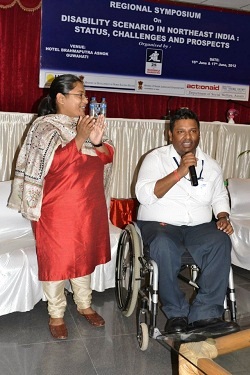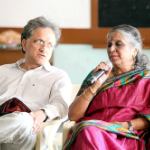As a woman who has never been sexually harassed in the workplace I now feel like a rare and exotic beast. I’ve been bullied by women bosses, sidelined by male ones and worked with uncooperative, politicking colleagues of both sexes, but I’ve never had to endure, to put it in a somewhat genteel fashion, the unwanted attentions of a person in power at the workplace. I got lucky.
It would seem that sexual harassment – comments about a woman’s appearance, off-colour jokes and suggestive remarks, the unwelcome touch, the open leer, the invitations to dinner, forwarding of links to porn, and the outright attack – is rife in the Indian work place. This despite Section 2 (n) of the yet-to-be-notified Sexual Harassment of Women at Workplace (Prevention, Prohibition and Redressal) Act, 2013 clearly specifying that sexual harassment “includes any one or more of the following unwelcome acts or behaviour (whether directly or by implication) namely: physical contact and advances; or a demand or request for sexual favours; or making sexually coloured remarks; or showing pornography; or any other unwelcome physical verbal or non-verbal conduct of sexual nature.”
While a blog by an intern blew the lid off sexual harassment within the judiciary, the Tehelka tamasha exposed it in the media. In both cases, young women in their twenties, who had to fight off the groping hands of powerful men much older than themselves - trusted men, men who should have maintained the requisite respectful distance, men who should have known better - decided to do the almost unthinkable. They decided to speak out. The ubiquity of social networking helped their stories spread in record time, leading to widespread outrage especially among women, and almost certainly goaded the media to take a stand.
In a pre-social networked world it’s quite likely that the stories would have been relegated to ladies’ loo chatter, and would have eventually fizzled out, surfacing only in the occasional warnings women give each to be wary of so-and-so. The rage on Facebook and twitter, however, forced the issue onto the front pages and prime time TV with, in the Tehelka case, especially, former good friends and colleagues of the accused editor and an army of disgruntled former employees oscillating between schadenfreude, and myotahapia – the embarrassment one feels at the stupidity of another.
And then, as is usual in India, the case became less about punishing sexual harassment – in this instance now considered rape under the new definition of the act - and more about a politician using the incident to gain national prominence while also simultaneously pleasing the native constituency and gaining valuable points within a political party. This could have been a fantastic plot for an absurd novel only sadly, every bit of it is real. As real as the revelation that most establishments in India don’t have a good enough mechanism – indeed any at all - in place to handle sexual harassment cases; as real as the presence of boy’s clubs within the judiciary, the media and the corporate world that attempt to shield offenders or at least downplay the seriousness of their offences; as real as the discomfort of the urban Indian male who now believes an unguarded remark that would once have been excused as office banter could land him in the lockup; as real too as the understanding that few women are fully aware of what the Vishaka guidelines (they’ve been around for the last 15 years), the Sexual Harassment of Women at Workplace (prevention, prohibition and Redressal) Act or the Justice JS Verma Committee report – the names of which have been popping up regularly in the last few weeks - entail.
Why all this is so is a mystery but perhaps the low participation of women in India’s workforce has much to do with it. Studies show that a large proportion of young women drop out before they reach mid-career level; women also make up just 24 percent of the nation’s 480 million-strong workforce. Recently, there was much handwringing when it appeared that even that meagre figure was set to fall. Besides the serious economic repercussions on the country – Lakshmi Puri of UN Women contended that India’s growth rate would increase by a further 4.2 per cent per year if women were allowed to participate more - this means ensuring women a working environment that’s at once challenging and safe and offering them all the support they need to successfully juggle childcare, obligations to family, and a career – concerns that Indian men typically leave to their wives – without having to also contend with the lecher in the next cubicle… or in the luxurious corner cabin occupied by the boss.
Bringing about this change requires a shift in perspective not only in the offices of the country – a shift that ensures that acceptable behaviour is well defined, that redressal mechanisms are firmly in place, and that the safety of women workers is paramount – but also within families, within the larger culture. This, of course, is easy to mouth but difficult to execute involving as it does the unpacking of thousands of years of patriarchal baggage. The prospect of living in an unequal society, one where you have to be constantly on your guard, can leach the joy out of life. But perhaps things are changing. The recent spate of high profile cases of sexual harassment has turned the spotlight on the issue of sexual misconduct like never before – apart from the ongoing saga of the retired honourable Justice AK Ganguly accused of attempting to ply an intern with drink and molest her, the newspaper front pages today also featured the case of JP Joshi, the Additional Secretary of Uttarakhand, accused of assaulting a young woman, and Prabhat Garg, a DRDE scientist, accused of harassing a research scholar.
Clearly, sexual predators don’t necessarily wear sock masks and lurk in dark alleys. Few Indian women escape street sexual harassment. Now it would seem that, especially for young women, the ones who aren’t yet “spoken for” ie wrapped in the claustrophobic embrace of marriage, the workplace isn’t a refuge either. It is time to recognise that the future of this nation depends on how quickly we change that.







































